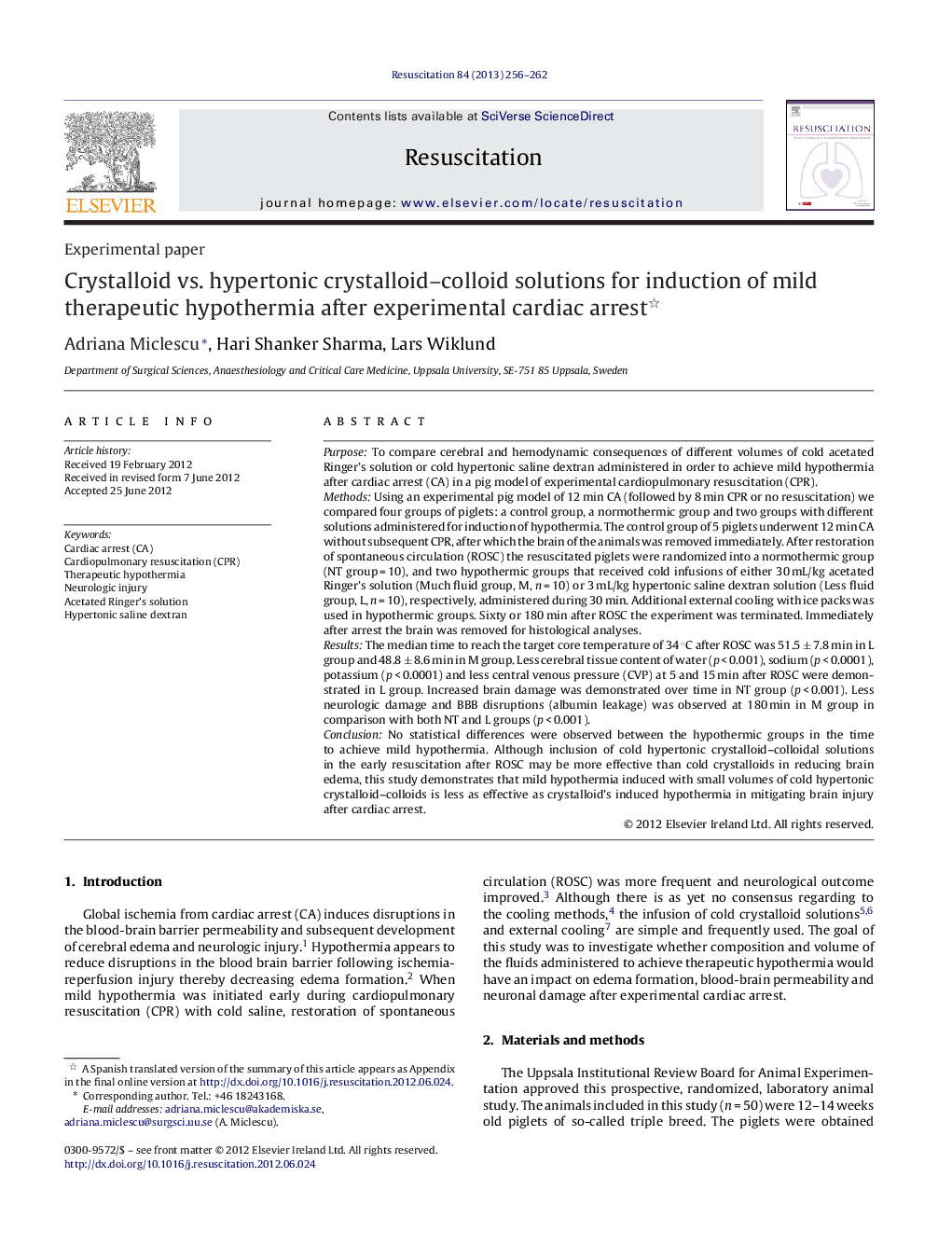| کد مقاله | کد نشریه | سال انتشار | مقاله انگلیسی | نسخه تمام متن |
|---|---|---|---|---|
| 3008337 | 1181453 | 2013 | 7 صفحه PDF | دانلود رایگان |

PurposeTo compare cerebral and hemodynamic consequences of different volumes of cold acetated Ringer's solution or cold hypertonic saline dextran administered in order to achieve mild hypothermia after cardiac arrest (CA) in a pig model of experimental cardiopulmonary resuscitation (CPR).MethodsUsing an experimental pig model of 12 min CA (followed by 8 min CPR or no resuscitation) we compared four groups of piglets: a control group, a normothermic group and two groups with different solutions administered for induction of hypothermia. The control group of 5 piglets underwent 12 min CA without subsequent CPR, after which the brain of the animals was removed immediately. After restoration of spontaneous circulation (ROSC) the resuscitated piglets were randomized into a normothermic group (NT group = 10), and two hypothermic groups that received cold infusions of either 30 mL/kg acetated Ringer's solution (Much fluid group, M, n = 10) or 3 mL/kg hypertonic saline dextran solution (Less fluid group, L, n = 10), respectively, administered during 30 min. Additional external cooling with ice packs was used in hypothermic groups. Sixty or 180 min after ROSC the experiment was terminated. Immediately after arrest the brain was removed for histological analyses.ResultsThe median time to reach the target core temperature of 34 °C after ROSC was 51.5 ± 7.8 min in L group and 48.8 ± 8.6 min in M group. Less cerebral tissue content of water (p < 0.001), sodium (p < 0.0001), potassium (p < 0.0001) and less central venous pressure (CVP) at 5 and 15 min after ROSC were demonstrated in L group. Increased brain damage was demonstrated over time in NT group (p < 0.001). Less neurologic damage and BBB disruptions (albumin leakage) was observed at 180 min in M group in comparison with both NT and L groups (p < 0.001).ConclusionNo statistical differences were observed between the hypothermic groups in the time to achieve mild hypothermia. Although inclusion of cold hypertonic crystalloid–colloidal solutions in the early resuscitation after ROSC may be more effective than cold crystalloids in reducing brain edema, this study demonstrates that mild hypothermia induced with small volumes of cold hypertonic crystalloid–colloids is less as effective as crystalloid's induced hypothermia in mitigating brain injury after cardiac arrest.
Journal: Resuscitation - Volume 84, Issue 2, February 2013, Pages 256–262